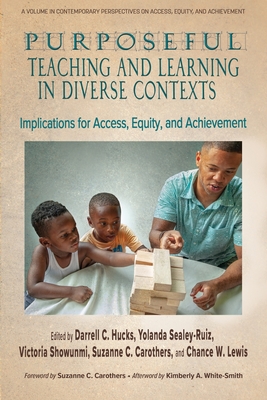ritique regarding their effectiveness and professionalism in classrooms. At every level, their work is often measured solely against student achievement outcomes, often on standardized tests (Darling-Hammond & Youngs, 2002; Ravitch, 2010). Unfortunately, students who are coming from culturally, economically, and linguistically diverse backgrounds are often occupying the bottom rungs regarding academic achievement (Ladson-Billings, 1995; Milner,2010; Hucks, 2014). What are the obstacles and challenges teachers and students face in their respective school settings and how do they grapple with and overcome them? Finally, what do these teachers and students know that motivates and informs their work? The scholars in this volume will take up these questions and share the findings of their research in the field of leadership, teacher education, and achievement.
These concerns are not limited to the geographic boundaries of the United States of America. Engaging purposeful teaching is an imperative that concerns students, teachers, teacher educators, educational leaders, and education policy makers around the globe. There are many educators worldwide who are committed to delivering this type of teaching and promoting learning that is engaged and active. The four sections of the book capture the work of educators in teaching in diverse global settings such as the Australia, United Kingdom, Jamaica, Turkey, and across America. As diverse populations of students enter American classrooms, it is important for their teachers to have relatable examples of purposeful teaching that are culturally responsive and culturally relevant.








